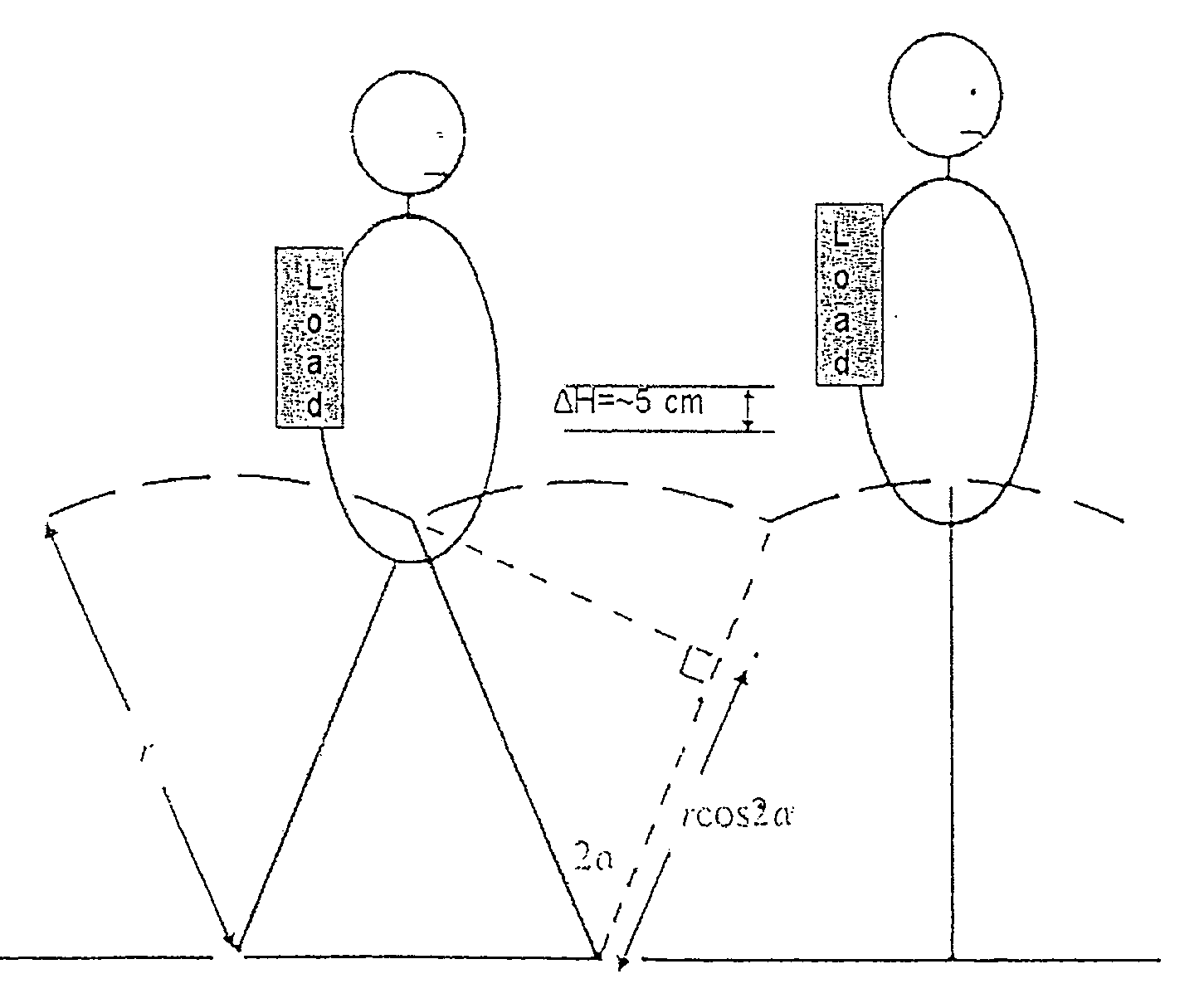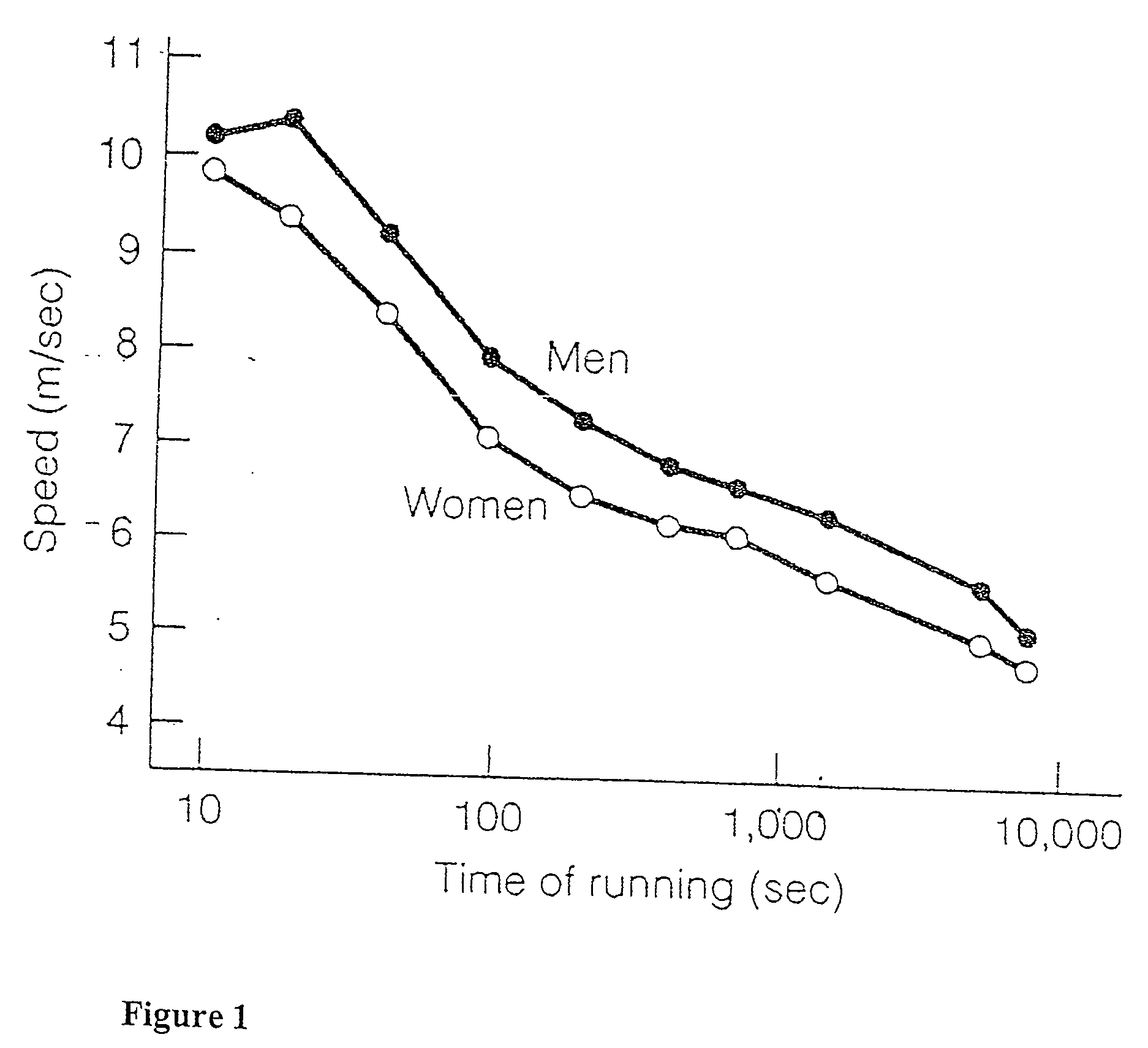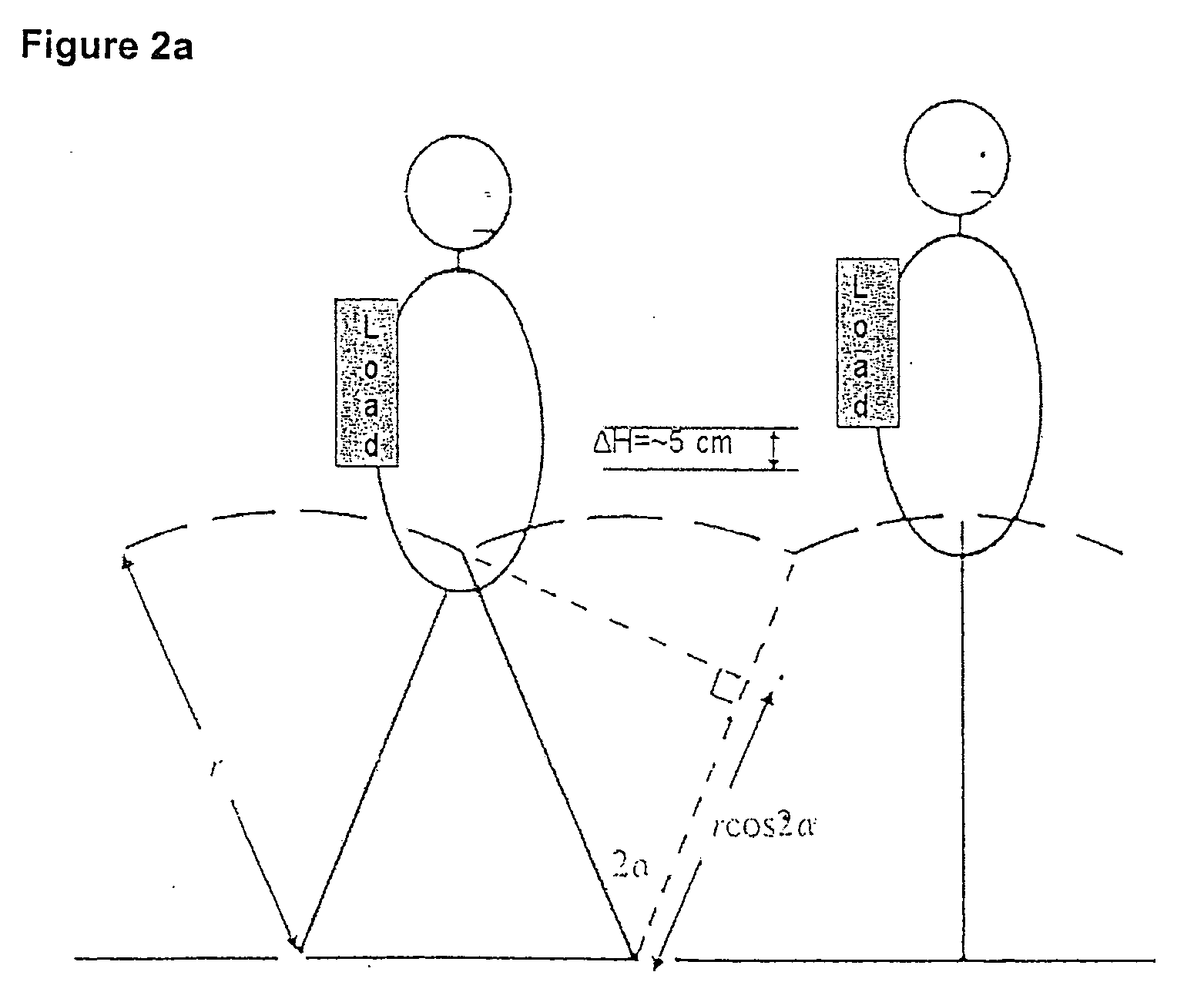Backpack for harvesting electrical energy during walking and for minimizing shoulder strain
a backpack and walking technology, applied in the direction of generators/motors, machines/engines, electric generator control, etc., can solve the problems of limiting the time soldiers can remain in the field, battery weight can become a significant issue, and the total dependence on batteries, so as to reduce the absolute vertical motion, and increase the force
- Summary
- Abstract
- Description
- Claims
- Application Information
AI Technical Summary
Benefits of technology
Problems solved by technology
Method used
Image
Examples
first embodiment
[0066]FIGS. 4 and 5 illustrate a rear perspective view of a suspended-load backpack 10 in accordance with the invention. As illustrated, backpack 10 includes a frame 20 including vertical rods 22 and horizontal bars 24. In an illustrative embodiment, rods 22 are made of hardened chrome plated shafts having ½ inch diameters while bars 24 are made of aluminum. Frame 20 supports a suspended load 30 which may be in the form of a box or satchel connected to a load support structure or (e.g., aluminum) plate 40 suspended with respect to the frame 20. In the embodiment of FIGS. 4 and 5, the load support structure 40 is supported with respect to frame 20 in the vertical direction by extension springs 50 (e.g., nickel plated steel with 2:1 extension and 5.2 lbs / in. spring constant) that have spring constants selected to support the desired load rating for the suspended load 30. A fourth identical extension spring pulls down on plate 40, thereby providing a restoring force. Although three spr...
second embodiment
[0069]FIG. 7 illustrates a mechanism for transferring mechanical movement to a DC servo motor 120 where the lever crank mechanism is replaced by a rack 140 connected to load support structure 40 and a corresponding pinion gear 150 connected directly or through gear linkages to DC servo motor 120. As in the embodiment of FIG. 6a, the rack 140 may fold away from the pinion gear 150 to facilitate access to the pinion gear 150 for manual cranking of the DC servo motor 120, as when the user is resting. FIG. 8a illustrates the mechanism of FIG. 7 in more detail. As illustrated, the up / down movement of the rack 140 with respect to the pinion gear 150 turns gears 114, 116, 118, and 119 so as to transfer energy to DC servo motor 120. As shown in FIG. 8b, the output of DC servo motor 120 is provided to an electronics charging unit 400 where it is rectified by a rectifier 122 and filtered by a capacitive filter 124 before being provided to a battery charger 126 for recharging batteries in batt...
third embodiment
[0071]FIG. 10 illustrates a mechanism for transferring mechanical movement to an electric motor unidirectionally using two racks 170 and 175 and two sets pf pinion gears 180, 195 and 185, 190, one rack and pinion gear for upward movement (rack 175 and pinion gears 185, 190) and one rack and pinion gear for downward movement (rack 170 and pinion gears 180, 195). Better electricity generation may be achieved by providing unidirectional movement of the DC servo motor 120. As illustrated, the two racks 170 and 175, two pinion gears180 and 190, and two free wheels 205, 208 (with opposite polarities) are attached to the motor gears (FIG. 8b) to facilitate clockwise cranking of the motor gear both as the suspended load 30 rises and as suspended load 30 falls during walking. As illustrated, one rack 170 drives the motor gear on the way up and the other rack 175 drives the motor gear on the way down. When coupled to a fly wheel 200 to drive the motor gear in one constant direction, this move...
PUM
 Login to View More
Login to View More Abstract
Description
Claims
Application Information
 Login to View More
Login to View More - R&D
- Intellectual Property
- Life Sciences
- Materials
- Tech Scout
- Unparalleled Data Quality
- Higher Quality Content
- 60% Fewer Hallucinations
Browse by: Latest US Patents, China's latest patents, Technical Efficacy Thesaurus, Application Domain, Technology Topic, Popular Technical Reports.
© 2025 PatSnap. All rights reserved.Legal|Privacy policy|Modern Slavery Act Transparency Statement|Sitemap|About US| Contact US: help@patsnap.com



